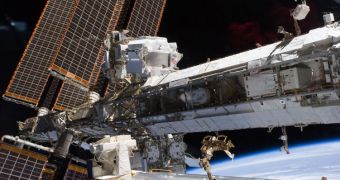The most important cargo that the space shuttle Endeavour carried to low-Earth orbit on May 16 is the Alpha Magnetic Spectrometer, a device developed by an international team of physicists led by experts at the Massachusetts Institute of Technology (MIT), in Cambridge.
This $2 billion dollar particle detector has a pretty straightforward mission – analyze incoming cosmic rays, and gather proof that dark matter and dark energy are real and measurable. The instrument also needs to look for antimatter in Earth's neighborhood.
Experts at the MIT Laboratory for Nuclear Science (LNS) Electromagnetic Interactions Group (LIG) were in charge of designing, constructing and commissioning the AMS detector. As such, the principal investigator of the mission is physicist Samuel Ting.
He holds an appointment as the MIT Thomas Dudley Cabot professor of physics, and was the mastermind behind the creation of the AMS. The investigator is also a 1976 Nobel Prize in Physics laureate, alongside expert Burton Richter. The duo found the J/Psi heavy elementary particle.
Ting explains that data obtained by the AMS could be used to create new theories and explanations regarding the formation and evolution of the Universe. The datasets could also help explain why there is more baryonic matter than antimatter in the Cosmos.
“We can look for dark matter, look for antimatter and look for strangelets,, Ting explained during a press conference after the space shuttle launched successfully.
“But to advance in physics is to push current knowledge aside. Exploring new territory with a precision instrument is the key to discovery. What we will really see, nobody knows,” the expert added.
“The most exciting objective of AMS is to probe the unknown: to search for phenomena which exist in nature that we have not yet imagined nor had the tools to discover,” he went on to say.
Physicists from 60 universities and research institutions in 16 countries collaborated to develop the AMS and, in this sense, the detector is indeed an international instrument. It is also one of the most complex scientific experiments ever flown in space.
Astronauts aboard the International Space Station and shuttle Endeavour already attached the AMS to its new home, on the space lab's starboard truss rod.
“The International Space Station will transform into a high-energy physics laboratory, with access to the most powerful accelerator in the Universe, which is the Universe itself,” says Saul Gonzalez, who is based at the US Department of Energy (DOE) Office of High-Energy Physics.

 14 DAY TRIAL //
14 DAY TRIAL //